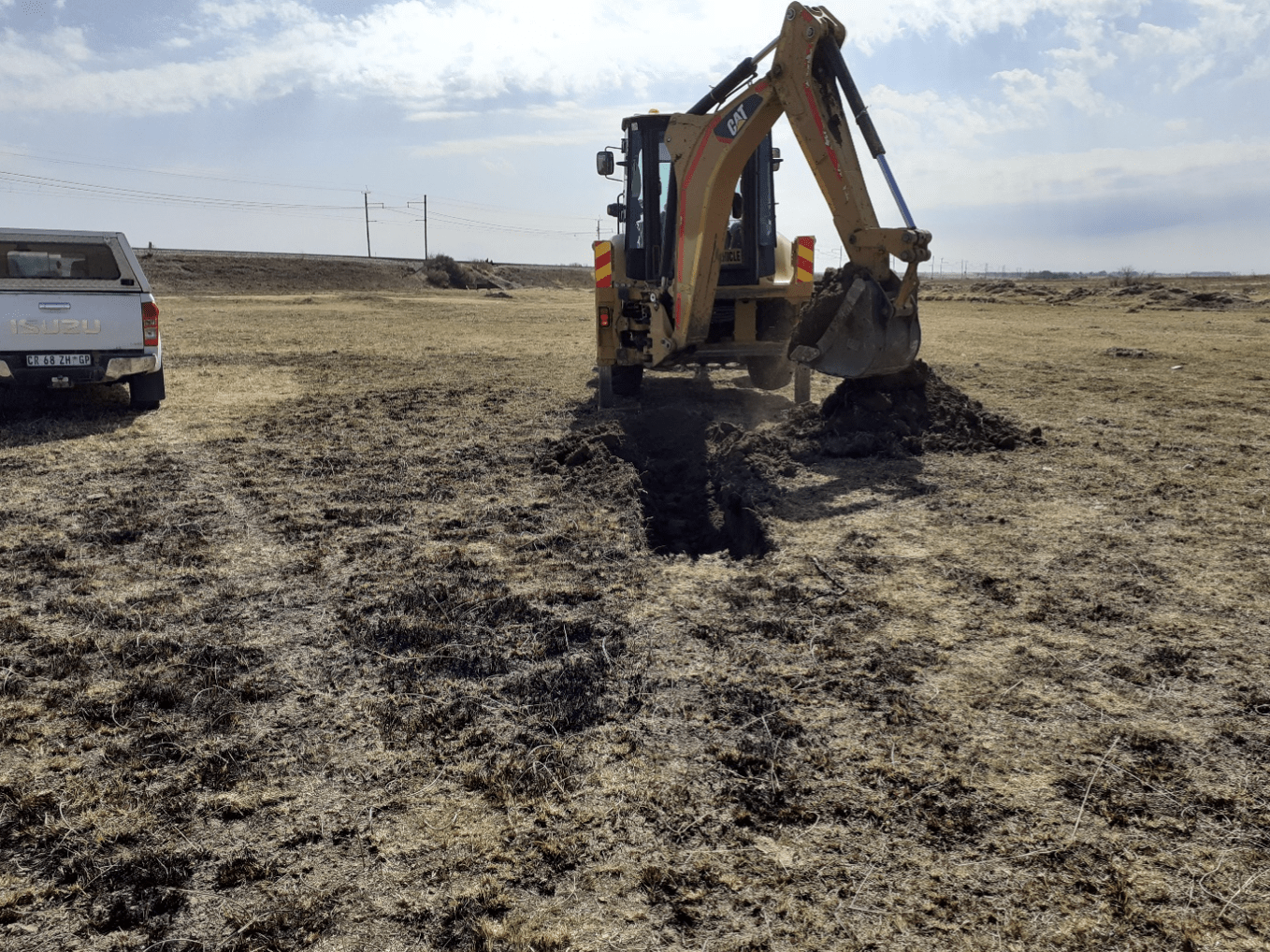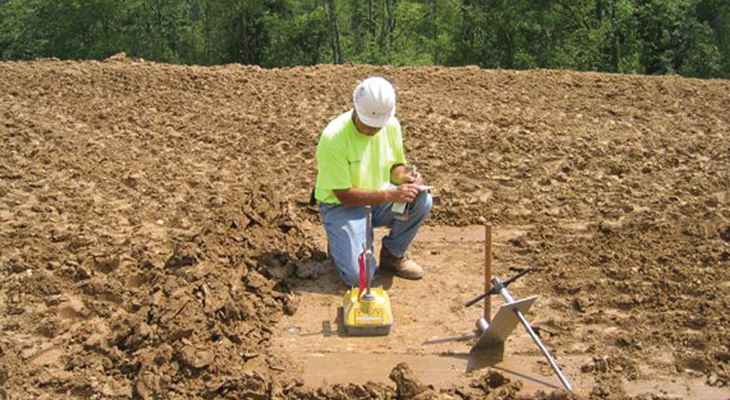Checking out the Role of a Geotechnical Engineer Description and Obligations
Wiki Article
The Relevance of Geotechnical Design in Addressing Environmental Difficulties and Enhancing Construction Safety And Security
Geotechnical design offers as a keystone in the crossway of ecological stewardship and construction safety, offering important insights into the behavior of soil and rock under numerous problems. By applying critical website investigations and customized mitigation procedures, geotechnical designers play an important function in safeguarding both human lives and environmental integrity.
Duty of Geotechnical Engineering
Geotechnical design plays an important duty in the layout and building of infrastructure by dealing with the habits of dirt and rock products under different conditions. This field of engineering is vital for understanding the interaction between structures and the ground, that includes determining the load-bearing capacity of dirt, assessing stability, and forecasting possible negotiation or failing.Geotechnical engineers are accountable for carrying out site examinations, which involve tasting and testing soil and rock to collect information on their physical and chemical residential properties. This details is important for designing structures, preserving walls, and various other earth-retaining structures that make sure safety and security and longevity. Geotechnical engineering educates the choice of proper construction techniques and products, consequently minimizing threats connected with dirt behavior.
In addition, the combination of geotechnical engineering principles right into urban planning and environmental monitoring is vital for attending to obstacles such as ground contamination and groundwater management. By recognizing geotechnical factors, designers can create lasting services that improve the strength of facilities versus all-natural threats, while additionally advertising ecological stewardship. Inevitably, the duty of geotechnical engineering is crucial for achieving risk-free, long lasting, and ecologically aware building methods.
Soil Disintegration Mitigation
Soil disintegration postures a substantial hazard to both environmental security and infrastructure stability, impacting about 24 billion lots of productive dirt shed annually worldwide. This phenomenon is exacerbated by elements such as deforestation, urbanization, and bad agricultural practices. Geotechnical design plays a pivotal role in developing efficient dirt erosion mitigation methods that guard both the environment and building and construction jobs.One technique requires the execution of erosion control approaches such as plants growing, which stabilizes dirt via root systems. Additionally, the building of keeping terraces and walls can properly reduce surface area drainage and safeguard at risk areas from disintegration. Correct water drainage layout is also crucial; it minimizes water buildup and directs excess overflow away from critical frameworks.
Moreover, geotechnical designers utilize dirt stabilization strategies, such as the application of geotextiles and biodegradable floor coverings, to boost dirt cohesion and stop deterioration - all about geotechnical engineering. Regular surveillance and assessment of erosion-prone websites allow prompt treatments, making sure long-lasting sustainability. By integrating these techniques, geotechnical design not just minimizes the impacts of soil disintegration yet also adds to the durability of facilities versus ecological challenges, eventually fostering a safer and a lot more sustainable constructed setting
Groundwater Protection Methods
Groundwater offers as a crucial source for drinking water, agriculture, and industrial procedures, making its defense important for environmental sustainability and public wellness. Effective groundwater security approaches are important in alleviating contamination risks and guaranteeing the long life of this source.
Normal tracking of groundwater top quality is likewise necessary, making it possible for early detection of contamination resources and promoting timely removal initiatives. Utilizing sophisticated innovations, such as geophysical studies and remote picking up, help in determining possible threats to groundwater books.
Furthermore, public education and stakeholder engagement are crucial, promoting area support for groundwater security campaigns. about geotechnical engineering. By incorporating governing steps, technological developments, and community involvement, we can create an about his extensive structure that safeguards groundwater sources while advertising sustainable development and construction techniques
Landslide Threat Management
Landslides present significant risks to both human safety and infrastructure, making effective risk management methods necessary. Geotechnical design plays an essential duty in recognizing, evaluating, and mitigating landslide threats. An extensive understanding of incline stability, dirt mechanics, and hydrology is essential for establishing efficient threat administration plans.The initial step in landslide risk management includes complete site examinations, which include geological mapping and dirt screening. These examinations aid designers review the potential for landslides by recognizing crucial aspects such as incline angles, soil make-up, and water web content. Making use of innovative technologies such as remote noticing and geophysical surveys can enhance the precision of these evaluations.
When risks are identified, suitable mitigation procedures can be implemented. These might include design services such as maintaining walls, drainage systems, and slope stablizing methods. Keeping an eye on systems need to be established to spot indicators of ground motion and modifications in water degrees, allowing for proactive treatments.

Enhancing Building Safety
Building sites often present a myriad of hazards that can threaten worker safety and job honesty. Geotechnical design plays a crucial function in improving construction safety and security by offering essential understandings right into subsurface problems. Via detailed dirt and rock evaluation, geotechnical designers can determine potential dangers, such as soil instability, groundwater issues, and seismic susceptabilities, which may see here endanger the security of building and construction activities.Executing geotechnical options, such as appropriate foundation design and the usage of preserving frameworks, minimizes these threats significantly. These services not only make sure the stability of the frameworks being built sites yet additionally produce a more secure working setting for building and construction workers.
Moreover, cultivating a society of security with training and adherence to developed safety methods better improves building website safety. By integrating geotechnical experience right into the preparation and execution stages, building and construction projects can attain greater safety and security criteria, ultimately safeguarding workers and making certain effective task completion.
Conclusion
Finally, geotechnical engineering works as a critical technique in tackling environmental challenges and advertising building and construction safety. Through reliable soil erosion reduction, groundwater protection approaches, and landslide danger management, geotechnical engineers add to the advancement of resilient facilities. The assimilation of these methods promotes a more secure building and construction environment and enhances the sustainability of civil engineering projects. Inevitably, the proficiency of geotechnical engineers is important in securing both natural resources and human lives against potential threats.Geotechnical engineering serves as a keystone in the intersection of environmental stewardship and building and construction safety, supplying essential insights right into the behavior of soil and rock under numerous conditions. Geotechnical engineering educates the selection of ideal building approaches and materials, consequently decreasing threats linked with dirt behavior.
Geotechnical design plays a critical duty in developing efficient soil erosion reduction strategies that guard both the setting and building and construction jobs.
Additionally, geotechnical designers utilize soil stabilization methods, such as the application of geotextiles and biodegradable floor coverings, to enhance soil cohesion and avoid degradation. With comprehensive dirt and rock evaluation, geotechnical engineers can determine prospective risks, such as dirt instability, groundwater concerns, and seismic vulnerabilities, which may jeopardize the safety of building activities.
Report this wiki page